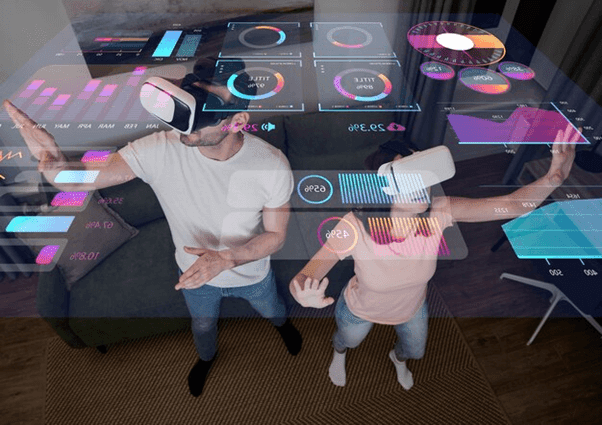
The Changing Landscape
The Changing Landscape of Fan Engagement in Web3
In the fast-evolving world of Web3, a fascinating transformation is taking place. The traditional boundaries separating fans from creators are blurring, redefining the concept of “original” work and reshaping how fan contributions are supported and rewarded.
The Changing Landscape of Fan Engagement in Web3

At the core of this transformation lies the principle of decentralization. Blockchain technology empowers fans by enabling direct and transparent interactions with creators or projects, eliminating intermediaries and fostering a sense of ownership and autonomy.
Tokenization stands as a pivotal feature in Web3 fan engagement. Creators or projects can tokenize their content, creating unique digital assets or tokens representing ownership, access rights, or participation in governance. Fans can acquire these tokens, becoming stakeholders in the success and development of their favored creators or projects.
This newfound ownership sparks deeper connections between creators and their communities. Fans feel a sense of belonging and commitment, incentivized to actively contribute to the growth and sustainability of the ecosystem. Token holders might participate in decision-making processes, influence content creation, or receive exclusive benefits, thus fostering a more engaged and loyal fan base.
Moreover, the decentralized nature of Web3 ensures transparency and immutability. Smart contracts, powered by blockchain technology, automate and enforce predefined rules, ensuring fair and transparent interactions between creators and fans. This trustless environment builds confidence among fans, fostering stronger and more resilient communities.
This remarkable shift can be summarized in two key developments:
Fan-Creator Convergence: The division between fans and creators is rapidly fading. Fans are no longer mere spectators; they are actively influencing and even co-creating the original content. This raises questions about the very notion of “originality.”
New Funding and Business Models: Fans are embracing innovative funding sources and business models to create derivative projects. This represents a departure from the past when such ventures were virtually nonexistent.
The outcome of these changes is a broader and more dynamic landscape for creativity on the internet, offering increased accessibility, financial opportunities, collaboration, and personal fulfillment.
From Canon to “Fanon”
Web3 is diminishing the significance of distinguishing between fans and creators. Fans are now generating derivative works that attain equal recognition with the original content, and in some cases, their creations become officially part of the canon. Creators, on the other hand, are acknowledging the value fans bring to the creative process by making their work more amenable to derivative use from the outset, often adopting the CC0 or “no rights reserved” license. This shift aligns with the concept of the community economy, where co-creation is encouraged and rewarded through shared ownership.
Some noteworthy examples of this transformation are already unfolding:
- Shibuya, an animated film, was funded through the sale of NFT Producer Passes. NFT holders actively influence the storyline of the film through voting, earning tokens that represent a share in the final product. This direct fan involvement blurs the line between fans and creators.
- Jenkins the Valet, a Bored Ape NFT, was conceived and named by its owner, Tally Labs. Jenkins’ persona can be seen as an extended fanfiction, but it has gained such prominence that it secured a deal with CAA and has evolved into a new creative universe. Shared intellectual property ownership has transformed a single derivative work into a thriving creative ecosystem.
- Tally Labs is currently working on a longer novel set in the extended Bored Ape universe. Apes/Mutant Ape holders can contribute stories and influence the plot, with a 50% share of net profits from the book. NFT holders are licensing their IP to Tally Labs, creating a strong bond between fans and the work.
New Business Models for Fan Creation
Historically, fan-created works existed in a legal gray area due to copyright constraints, often pursued as hobbies rather than lucrative endeavors. Web3 creative projects, however, introduce a unique approach. Ownership of tokens provides fans with an inherent business model, motivating them to engage in derivative creation actively. In contrast to Web2, where fans contributed for free, Web3 empowers fan-owners with a stake in the success of their contributions through tokens, whose value increases with recognition.
This phenomenon is not limited to fanfiction but extends to various sectors, including music and social tokens, where token ownership motivates fans to become active participants and advocates.
Cultivating Shared Benefits
On the funding front, projects with treasuries can support fan-created works, accelerating the growth of their intellectual property. For instance, Nouns’ treasury, amassed through NFT sales, is dedicated to nurturing projects related to the Nouns universe. This model resembles J.K. Rowling funding fanfiction authors using her characters—a concept previously unheard of in traditional media.
In conclusion, Web3 creative projects are redefining the media creation paradigm. Communities of owners are forming around nascent creations, weaving their stories into existence with a vested interest, and sharing the benefits within their communities and beyond. Fans are becoming creators, and creators are encouraging more creativity, ultimately working towards the democratization of storytelling and creative expression for all.




